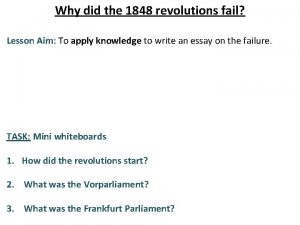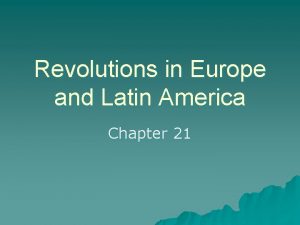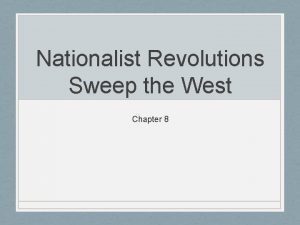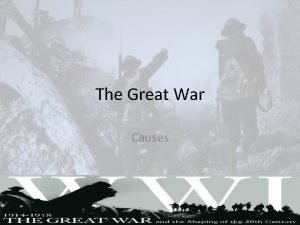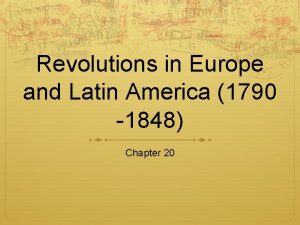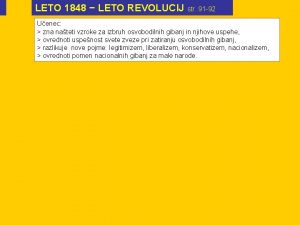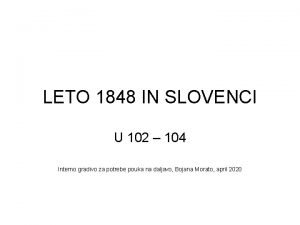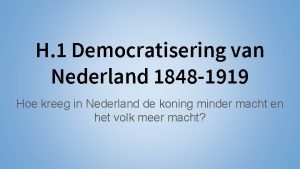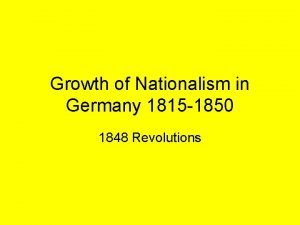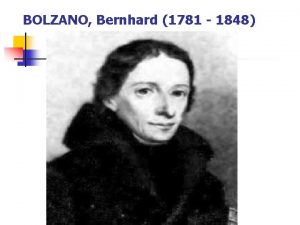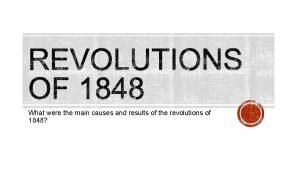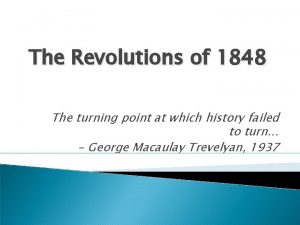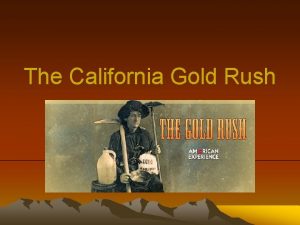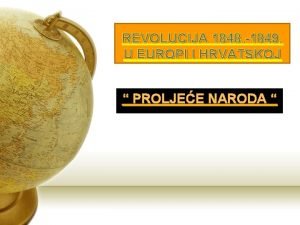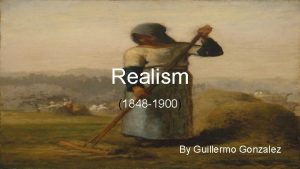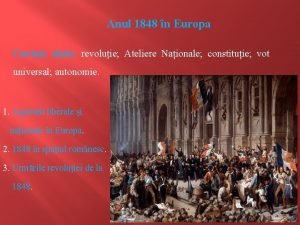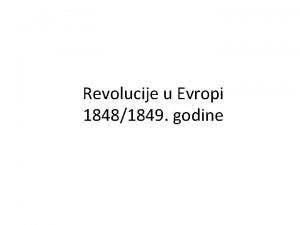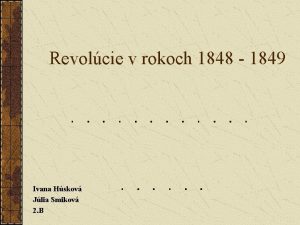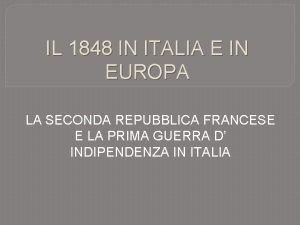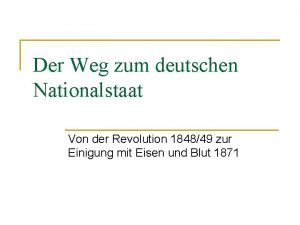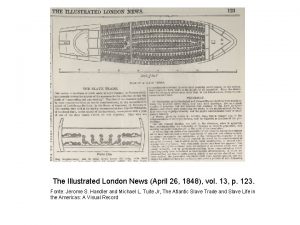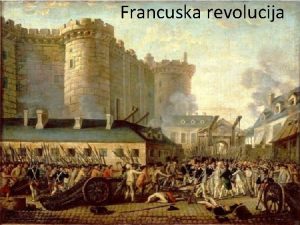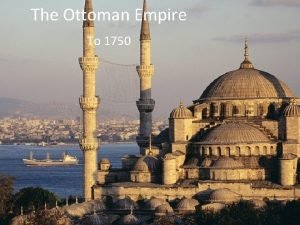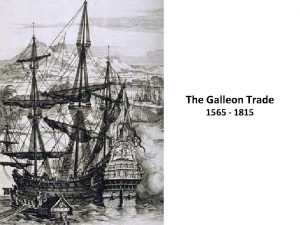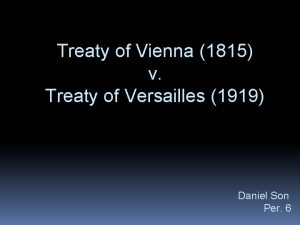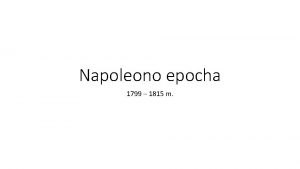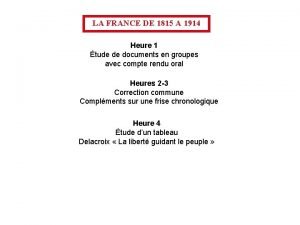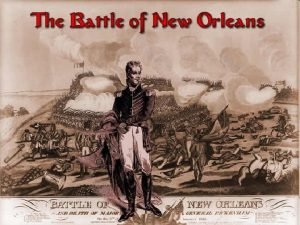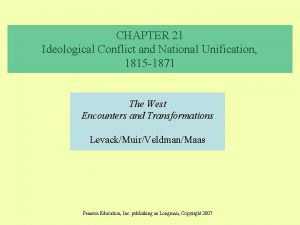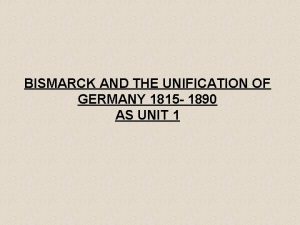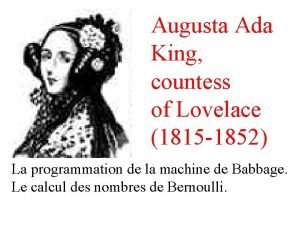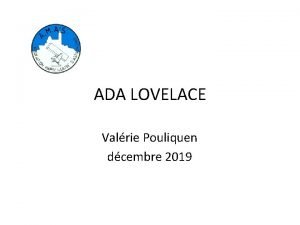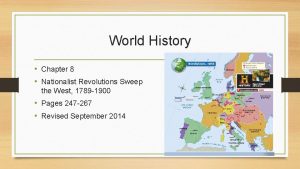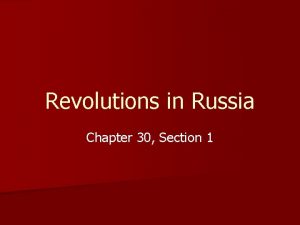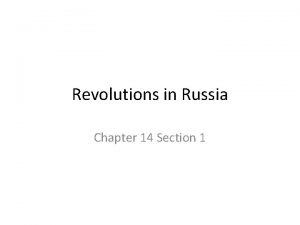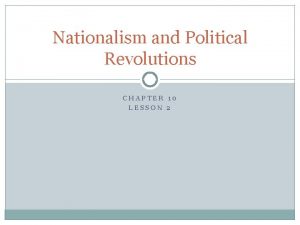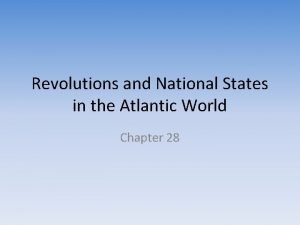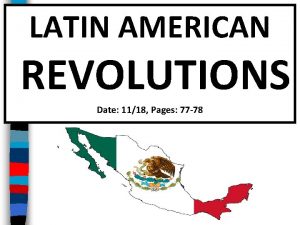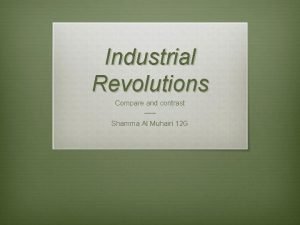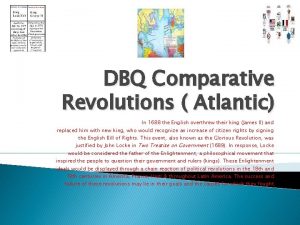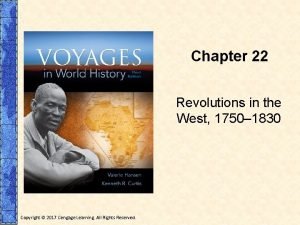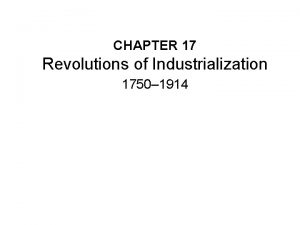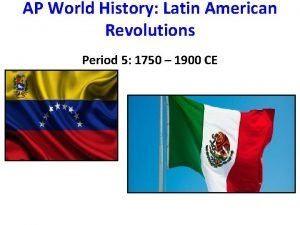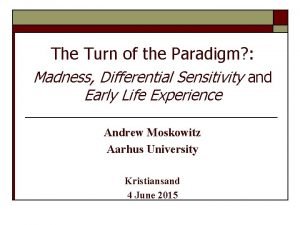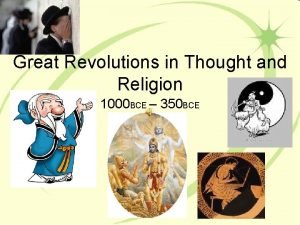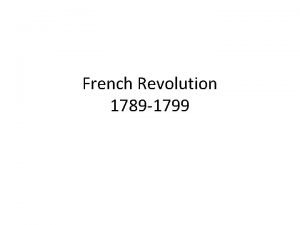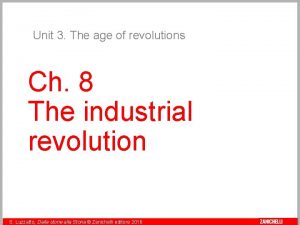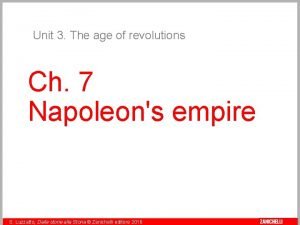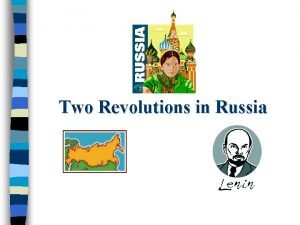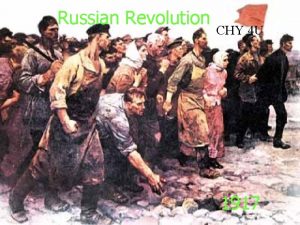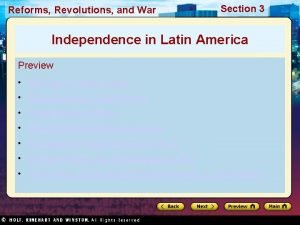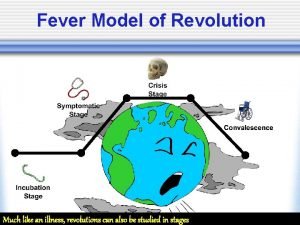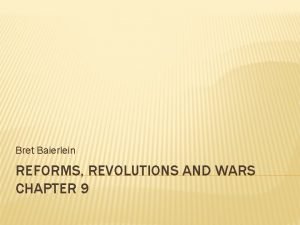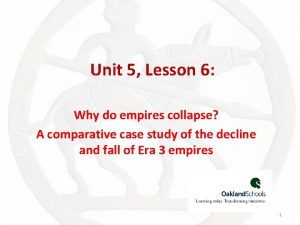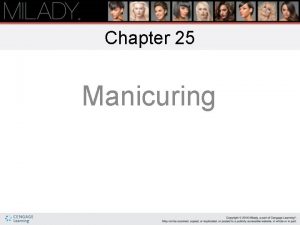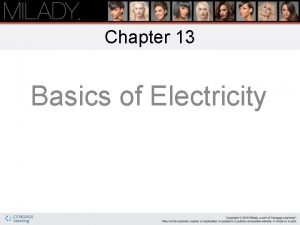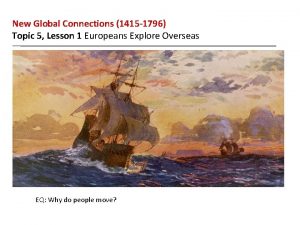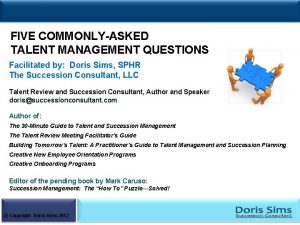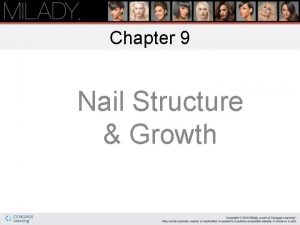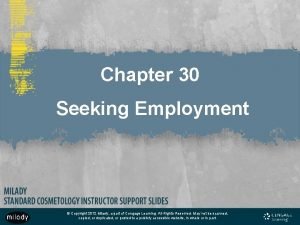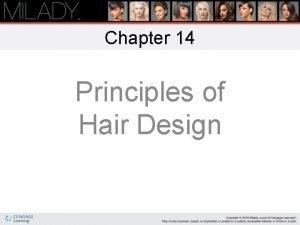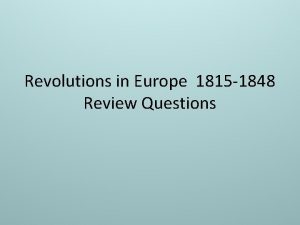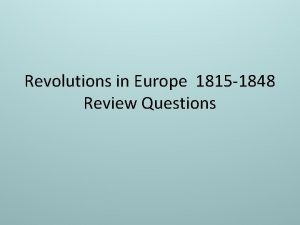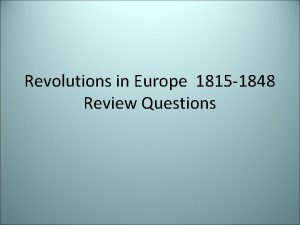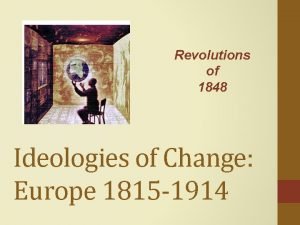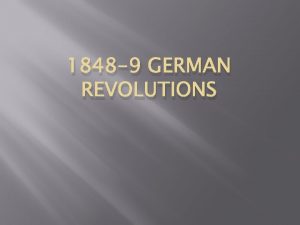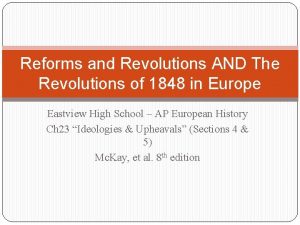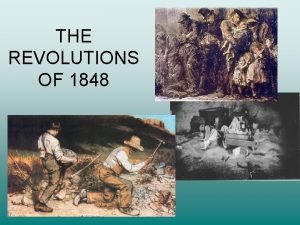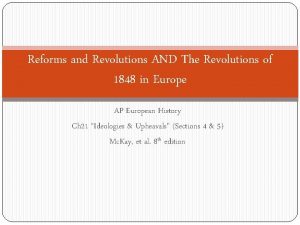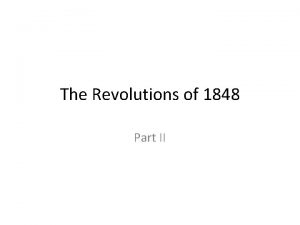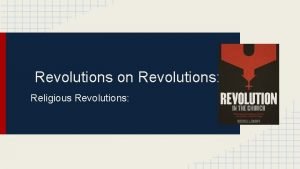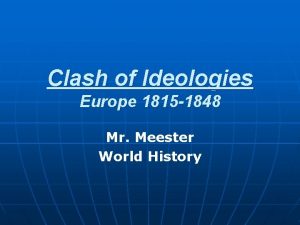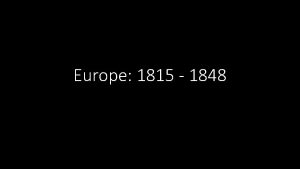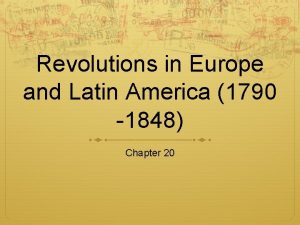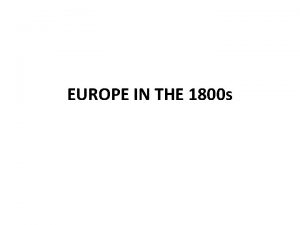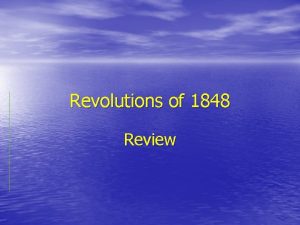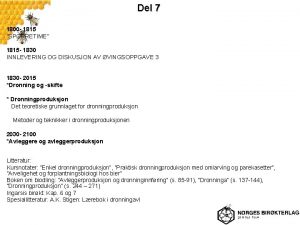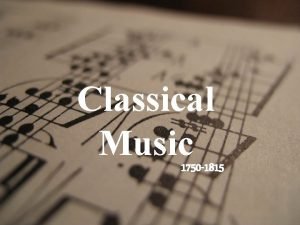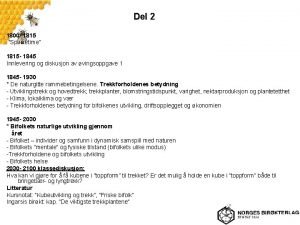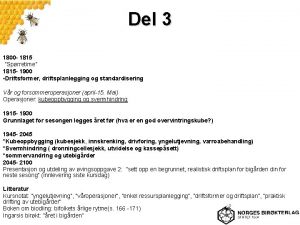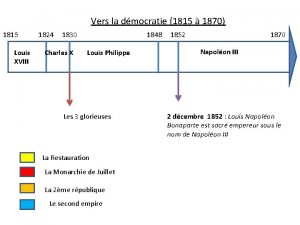Revolutions in Europe 1815 1848 Review Questions Who










































































































- Slides: 106

Revolutions in Europe 1815 -1848 Review Questions

Who were the conservatives, liberals, and radicals and what type of government did they want in the 1800 s?

• Conservatives-usually wealthy property owners and nobility – they argued for protecting the traditional monarchies of Europe • Liberals-mostly middle class business leaders and merchants – they wanted to give more power to the parliaments, but they only wanted the educated landowners to be able to vote • Radicals-favored drastic change to extend democracy to the people as a whole; they believed in the ideals of the French Revolution

What were the goals of the Congress of Vienna?

The Congress of Vienna wanted… • A return to the “Old Order” = monarchies • A balance of power among nations • To prevent future revolutions (in order to do that they would have to limit rights. )

How were rights limited after the Congress of Vienna?

The Congress of Vienna limits people’s right in order to maintain order – the “Old Order. ” • • • Limited freedom of speech and press secret police Censorship Illegal to trade unions Political parties were outlawed

What were the causes of revolutions in Europe during the 1830 s and in 1848?

Causes of European Revolutions in the 19 th Century: • Growing strength of nationalism • Long series of economic downturns and bad harvests – caused decade of the hungry fortiesex. Irish Potato Famine • Popular Impatience with reactionary rule and their limits on freedoms (reactionaries – believed that any kind of liberalism led to chaos and war; the best way to maintain order was to oppose any kind of democratic change; Klemens Von Metternich – spokesperson for the reactionaries)

What is nationalism?

Nationalism • Nationalism is the belief that one’s greatest loyalty should NOT be to a king or empire but to a nation of people who share a common culture and history.

How did Nationalism affect Europe?

In the 1800 s, nationalism upset the balance of power that the Congress of Vienna tried to create in Europe. It led to the development of nation-states which meant the end of empires as well as the creation of new countries/nation-states.

Where did most of the revolutions take place in the 1830 s and 1848?

Revolutions broke out in Prussia, Austria-Hungary, most of the German states, and many parts of Italy.


Nationalism led to revolts in the Balkans. (Balkans – Greece, Albania, Bulgaria, Romania, Turkey, Former Yugoslavia)

What role did radicals play in 19 th century revolutions in Europe?

• Radicals participated in most liberal revolutions, but only in France was the goal of the revolution a radical one.

What sparked revolts in France in 1830?

Charles X tried to return France to an absolute monarchy. Riots forced him to flee to Great Britain.

Who replaced Charles X?

Louis-Philippe (Citizen King) replaced Charles X. He supported liberal reforms. He reigned for almost 18 years, but his popularity declined in 1848. The people then rebelled and overturned the monarchy.

By 1848 radical frustration with reached a climax in France. At left is a famous Daumier cartoon showing Louis Philippe, the "Citizen King" who took office as a result of the July 1830 uprising, metamorphosing into a pearthe "bourgeois" monarchy. It nicely captured his loss of prestige in the years leading up to 1848. Daumier played a key role in this process.

Who replaced Louis-Philippe?

After the revolution of 1848, Alphonse de Lamartine replaced Louis-Philippe. France became a republic again for a short time.

What happened to France’s republican government?

France’s republican government almost immediately began to fall apart. The radicals soon split into factions. Lamartine and his supporters only wanted political reform while Louis Blanc and his supporters wanted political AND social reform. This led to bloody Society is okay, battles in the streets. let’s just make Society needs to change as well as government! the government more equal.

How were the revolts in France resolved?

In December 1848, Louis-Napoleon Bonaparte, nephew of Napoleon Bonaparte, won the presidential election. Four years later, he took the title of Emperor Napoleon III.

What were some of Louis-Napoleon’s accomplishments?

Louis-Napoleon built railroads, encouraged industrialization, and promoted public works projects. As a result of his efforts, unemployment decreased in France and the country began to prosper.

What were some of the effects of European revolutions?

Effects of 1848 Revolts: • Prussia and Austria granted constitutions and ended feudalism • Russia freed the serfs • Strong class division remained in many countries like France and the German States • Laid the foundation for the unification of Germany and Italy • Demonstrated the growing political importance of nationalism • Inspired Karl Marx to write “The Communist Manifesto” • Hammered home the lesson of the French Revolution: that the political, social, and economic demands of ordinary people must be taken seriously • 1848 was a watershed year for Europe, and many of the changes of the late nineteenth and early twentieth centuries have origins in this revolutionary period.

How did most of the revolutions in Europe, during the 19 th century, end?

Most of the revolts were crushed by 1849. Caricature by Ferdinand Schröder on the defeat of the revolutions of 1848/49 in Europe (published in Düsseldorf er Monatshef te, August 1849)

Nationalism Leads to Unity and Disunity

How did nationalism lead to disunity?

The Russian, Ottoman, and Austro-Hungarian Empires controlled people of many different ethnicities and cultures. These people demanded their independence which would eventually lead to the break up of these empires. Europe Today Europe in 1815

What were some of the different ethnic groups in the Russian Empire?

The Russian Empire • Made up of Russians, Ukrainians, Poles, Lithuanians, Latvians, Estonians, Finns, Jews, Romanians, Georgians, Armenians, and Turks


What convinced Russian leaders to modernize?

• Russia lost the Crimean War. Their lack of industrialization cost them the war. Russian troops were not able to receive needed supplies because of poor communication and transportation.

What was the Crimean War?

The Crimean War 1853 -1856 • This war was fought between Russia and the Ottoman Empire • The British Empire and The French Empire helped the Ottoman Empire • It was mostly fought on the Crimean peninsula. • The Crimean War is considered the first modern war, because it was the first to use railways and telegraphs for tactical purposes. It was also the first time war that was photographed. And Florence Nightingale was one of the first to use modern nursing practices to help wounded soldiers.

Confound it! I was wrong to take on all of Europe Tsar Nicholas I attempts to seize entire globe which threatens to crush him. In the background are silhouettes of French and British soldiers. During Crimean war series of lithographs depicting stupidities of inadequate Russian generals, badly prepared and equipped soldiers, frustrated Tsar.




Where is the Crimean Peninsula?

Where is the Crimean Peninsula?

Crimean Peninsula


Who were the last Russian Czars starting in 1815?

Alexander I 1801 -1825 He made reforms in the early years of his reign, but them revoked them. (Died of Typhus)

Czar Nicholas I 1825 -1855 The policy of his regime was “autocracy, orthodoxy, and nationality. ” He repressed non. Russian nationalities and religions. (died of pneumonia)

Alexander II 1855 -1881 • He implemented reforms. He abolished serfdom. • Lost the Crimean War • He maintained a liberal policy and reformed the government and military. • (Assassinated by a terrorist)

Alexander III 1881 -1894 He was NOT like his father. He was repressive and reactionary. He believed in autocracy, orthodoxy, and nationality.

Nicholas II (The Last Czar) 1894 -1917 Russia went from being one of the most powerful empires to a military and economic disaster. He abdicated the throne in 1917 during World War I.

King George V (right) with his first cousin Tsar Nicholas II, Berlin, 1913. Note the close physical resemblance between the two monarchs.



Nationalism Leads to Disunity

What were some of the different ethnic groups in the Austro-Hungarian Empire?

Austro-Hungarian Empire Made up of Hungarians, Germans, Czechs, Slovaks, Croats, Poles, Serbs, Slavs, and Italians

What were some of the different ethnic groups in the Ottoman Empire?

Ottoman Empire made up of Greeks, Slavs, Arabs, Bulgarians, Armenians, and Turks

Why did some European countries support Greek independence?

Europe made an exception for Greece, because many European countries felt a connection to Greece and they loved and respected Greek culture and ancient Greek history.

How did the Turks respond to increasing nationalism among the Armenians?

Turks deported and massacred Armenians from 1894 to 1896 and in 1915.

A corpse of a young Armenian boy starved to death during the genocide which began on April 24, 1915.

Turkish soldiers posing with the decapitated heads of Armenian community leaders, 1915.

Kurdish deportees forced from their villages in the southeast during Turkey’s ethnic cleansing campaign of the 1990 s.

Turkish soldiers posing with the decapitated heads of Kurdish rebels, January 11, 1996.

How did nationalism lead to unity?

Unifications of Italy and Germany • Nationalism led the Italian people, who were divided into several different areas, to unify into one country/nation-state. • Nationalism led the German people, who were also divided into several different areas, to unify into one country/nation-state.

Unification of Italy

Who were some important leaders that helped to unify Italy?

1832 Giuseppe Mazzini • Leader if nationalist group “Young Italy” • Briefly headed a republican government in Rome • 1848 revolutions failed and driven into exile

King Victor Emmanuel II • King of Piedmont-Sardinia Camillio di Cavour • Prime Minister of Piedmont-Sardinia • United Northern Italy • Began to help southern rebels

Giuseppe Garibaldi • Leader the “Red Shirts” • United Southern Italy • Allowed King Victory Emmanuel II to rule all of Italy



A contemporary British cartoon, entitled "Right Leg in the Boot at Last, " shows Garibaldi helping Victor Emmanuel put on the Italian boot.

What is a nation-state?

A nation-state is a country made up a people who share a common culture and history. This country has its own independent government. Italy goes from being several different kingdoms to being one united nationstate.

What are some characteristics of a nation-state?

Characteristics of a Nation-State • Nationality-belief in a common ethnic ancestry • Language-one language chosen as the “national language” • Culture-a shared way of life (food, dress, behavior, ideals) • History-a common past; common experiences • Religion-a religion shared by all or most of the people • Territory-a certain territory that belongs to the ethnic group; it’s “land”

Unification of Germany

Friedrich Wilhelm IV He was forced to call a constitutional convention.

“No Piece of Paper Will Come between Myself and My People, ”

This 1848 caricature is titled, “No Piece of Paper Will Come between Myself and My People, ” a statement made by King Friedrich Wilhelm IV at the opening of the First United Landtag in Prussia. There, the king made it perfectly clear that he had no intention of allowing his God-given rule to be diminished by a piece of paper, namely a constitution. In this lithograph, Friedrich Wilhelm IV tries to shut the door on the representatives’ demands for a democratic constitution. He is supported in this by the military, which had a tradition of loyalty to the monarchy and opposition to democratic strivings. With the aid of military violence, the king managed to reject this popular demand, and the forces of reaction triumphed. In the end, however, this course of events also prompted the population to use violence to secure the “piece of paper” that would guarantee their rights. “Satyrische Zeitbilder [Cotemporary Satirical Image] No. 28 by B. S. Berendsohn of Hamburg, ” colored lithograph, 1848.

Prussia

Who were the leaders who worked to unify Germany?

Wilhelm I Otto Von Bismarck • Succeeded Friedrich Wilhelm IV • Prime Minister • Master of “realpolitik” the politics of “blood and iron” • Violated the constitution and ruled without the consent of Parliament • Helped create Germany • Wars with Denmark &Austria


What political philosophy is Bismarck known for?

Realpolitik (The politics of reality) “The great questions of the day will not be settled by speeches or by majority decisionsthat was the great mistake of 1848 and 1849 -but by blood and iron. ”


Prussia


How did the balance of power change in Europe from 1815 to 1870?

• In 1815, after the Congress of Vienna, Britain, France, Austria, Prussia, and Russia were equal in power. • By 1870, Britain and Germany were clearly the most powerful countries in Europe economically and militarily. • Austria, Russia, and Italy lagged far behind and France was somewhere in the middle.

 Why did the 1848 revolutions fail
Why did the 1848 revolutions fail Revolutions in europe and latin america section 2 quiz
Revolutions in europe and latin america section 2 quiz Which ideas of romanticism would encourage nationalism?
Which ideas of romanticism would encourage nationalism? Europe faces revolutions
Europe faces revolutions Revolutions in europe and latin america
Revolutions in europe and latin america Leto 1848 leto revolucij
Leto 1848 leto revolucij Leto 1848 in slovenci
Leto 1848 in slovenci Leto 1848 in slovenci
Leto 1848 in slovenci Willem i
Willem i Humiliation of olmutz
Humiliation of olmutz Bolzano (1781 – 1848)
Bolzano (1781 – 1848) Slidetodoc.com
Slidetodoc.com Austroslavism
Austroslavism January 24 1848
January 24 1848 Revolucije u europi 1848
Revolucije u europi 1848 Realism (1848–1900)
Realism (1848–1900) 48 as katonadalok
48 as katonadalok 1848 revolution germany
1848 revolution germany Anul 1848 in europa
Anul 1848 in europa Revolution 1848 verlauf
Revolution 1848 verlauf Revolucije u evropi
Revolucije u evropi Francúzska revolúcia 1848
Francúzska revolúcia 1848 Vynález mikrofonu umožnil konstrukci
Vynález mikrofonu umožnil konstrukci Quadrilatero austriaco
Quadrilatero austriaco Deutschlands weg zum nationalstaat
Deutschlands weg zum nationalstaat Illustrated london news 1848
Illustrated london news 1848 Francuska revolucija
Francuska revolucija Ottoman empire in 1750
Ottoman empire in 1750 Jose basco y vargas
Jose basco y vargas Congresul de la viena 1815
Congresul de la viena 1815 Treaty of versailles 1815
Treaty of versailles 1815 1799-1815
1799-1815 Frise chronologique 1815 à 1870
Frise chronologique 1815 à 1870 Frise chronologique 1815 à 1870
Frise chronologique 1815 à 1870 Took a little trip
Took a little trip 1815
1815 Liberalism and nationalism in germany 1815-71
Liberalism and nationalism in germany 1815-71 Augusta ada king, countess of lovelace
Augusta ada king, countess of lovelace Lovelace 1815
Lovelace 1815 Metternichovský absolutismus
Metternichovský absolutismus Chapter 8 nationalist revolutions sweep the west
Chapter 8 nationalist revolutions sweep the west Chapter 30 section 1 revolutions in russia
Chapter 30 section 1 revolutions in russia Revolutions in russia chapter 14 section 1
Revolutions in russia chapter 14 section 1 Lesson 2 nationalism and political revolutions
Lesson 2 nationalism and political revolutions Atlantic revolutions global echoes
Atlantic revolutions global echoes Disadvantage of green revolution
Disadvantage of green revolution Revolutions and national states in the atlantic world
Revolutions and national states in the atlantic world Latin american revolution date
Latin american revolution date Shamma al muhairi
Shamma al muhairi Atlantic revolutions dbq
Atlantic revolutions dbq 22 revolutions
22 revolutions Chapter 17 revolutions of industrialization
Chapter 17 revolutions of industrialization David cheshire aecom
David cheshire aecom Latin americans in france
Latin americans in france Four great revolutions in thought and religion
Four great revolutions in thought and religion Chapter 8 the enlightenment and revolutions
Chapter 8 the enlightenment and revolutions Structure of scientific revolutions
Structure of scientific revolutions Aryan food
Aryan food List of revolutions
List of revolutions An age of revolutions zanichelli
An age of revolutions zanichelli Zanichelli
Zanichelli A tale of two revolutions grade 10, 1080l
A tale of two revolutions grade 10, 1080l A tale of two revolutions grade 10, 1080l
A tale of two revolutions grade 10, 1080l Reforms revolutions and war answer key
Reforms revolutions and war answer key Nationalist revolutions sweep the west
Nationalist revolutions sweep the west The fever model of revolutions
The fever model of revolutions Wars revolutions and reforms
Wars revolutions and reforms Chapter 17 atlantic revolutions and their echoes
Chapter 17 atlantic revolutions and their echoes Chapter review motion part a vocabulary review answer key
Chapter review motion part a vocabulary review answer key Writ of certiorari ap gov example
Writ of certiorari ap gov example Nader amin-salehi
Nader amin-salehi Traditional and systematic review venn diagram
Traditional and systematic review venn diagram Narrative review vs systematic review
Narrative review vs systematic review Unit 7: lesson 5 - fast start
Unit 7: lesson 5 - fast start World history unit 5 lesson 6
World history unit 5 lesson 6 What is scratching method in welding
What is scratching method in welding Hematology oncology board review course
Hematology oncology board review course 7 communication skills
7 communication skills The lord of the flies chapter 8 summary
The lord of the flies chapter 8 summary Unit 31 gas heat review questions
Unit 31 gas heat review questions Basic employability skills review questions
Basic employability skills review questions Eucharist multiple choice questions
Eucharist multiple choice questions Retention hyperkeratosis dermnet
Retention hyperkeratosis dermnet Describe how to maintain light cured gel nail enhancements
Describe how to maintain light cured gel nail enhancements Pedicure toe separators target
Pedicure toe separators target Name the basic nail shapes for women.
Name the basic nail shapes for women. Why study facial makeup
Why study facial makeup Milady chapter 23 review questions
Milady chapter 23 review questions Chapter 22 milady
Chapter 22 milady Chapter 21 reproductive system review questions
Chapter 21 reproductive system review questions How do thio relaxers straighten the hair
How do thio relaxers straighten the hair Notching hair
Notching hair Chapter 13 basics of electricity review questions
Chapter 13 basics of electricity review questions Anne frank review questions
Anne frank review questions New global connections unit test
New global connections unit test Module 9 review questions
Module 9 review questions Talent management questions
Talent management questions Tissue bordering the root and sides of fingernail
Tissue bordering the root and sides of fingernail What is a stem milady chapter 30
What is a stem milady chapter 30 Nail wrap resin is made from
Nail wrap resin is made from Full base curl
Full base curl Chapter 14 principles of hair design review questions
Chapter 14 principles of hair design review questions Chapter 10 nail disorders and diseases review questions
Chapter 10 nail disorders and diseases review questions Vgastands for
Vgastands for What happens to sam and eric in chapter 11
What happens to sam and eric in chapter 11 Module 1 review questions
Module 1 review questions Hvac unit 41 review questions
Hvac unit 41 review questions
